Browse
Navigating Context
Posted on: #iteachmsu
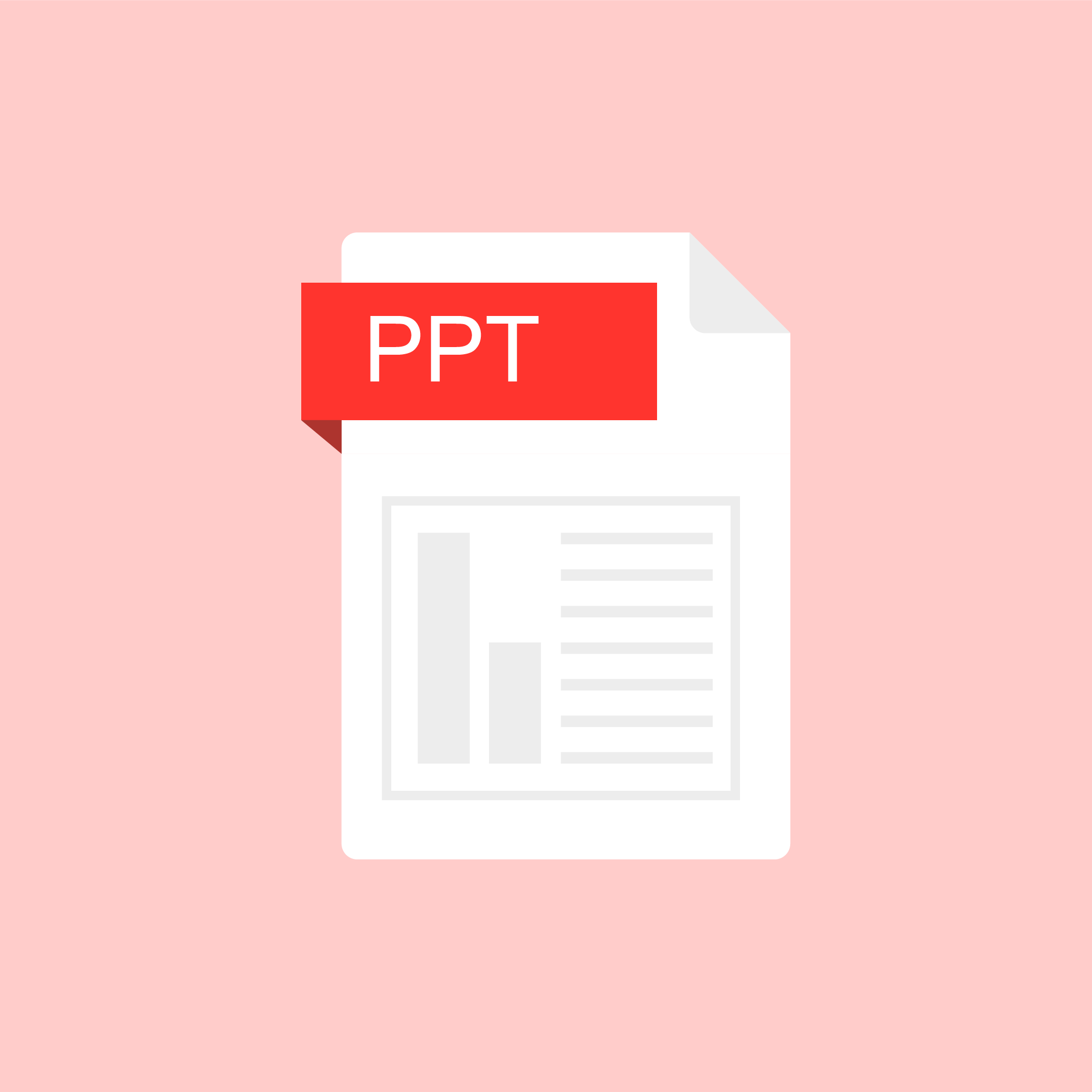
NAVIGATING CONTEXT
WHY AIRLINES OVERBOOK: USING TOY MODELS TO MAXIMIZE REVENUES
Article 8 : Migration: https://online.hbs.edu/blog/post/Why-Airlines-Overbook-Using-Toy-Models-to-Maximize-Revenues
By now, we have all seen the recent news about United Airlines forcibly removing a doctor from an overbooked flight. Almost every major publication has a story on how various airlines handle overbookings and the rules and regulations that come with it (hint: United doesn’t fare so well), but we wanted to look at the economics behind why airlines overbook.
At first glance, potentially having to pay as much as $1,350 in cash to remove a customer involuntarily from a seat that might have cost far less seems to go against the airline’s best interest. But if we take a more detailed look we can see why every airline overbooks to some extent.
By now, we have all seen the recent news about United Airlines forcibly removing a doctor from an overbooked flight. Almost every major publication has a story on how various airlines handle overbookings and the rules and regulations that come with it (hint: United doesn’t fare so well), but we wanted to look at the economics behind why airlines overbook.
At first glance, potentially having to pay as much as $1,350 in cash to remove a customer involuntarily from a seat that might have cost far less seems to go against the airline’s best interest. But if we take a more detailed look we can see why every airline overbooks to some extent.
Authored by:
Ben Chowdhury

Posted on: #iteachmsu


WHY AIRLINES OVERBOOK: USING TOY MODELS TO MAXIMIZE REVENUES
Article 8 : Migration: https://online.hbs.edu/blog/post/Why-Airline...
Authored by:
NAVIGATING CONTEXT
Thursday, Jul 1, 2021
Posted on: #iteachmsu

NAVIGATING CONTEXT
Getting Started
What is the #iteachmsu Commons?
Welcome to the #iteachmsu Commons
You teach MSU. We, the Academic Advancement Network, The Graduate School, and The Hub for Innovation in Learning and Technology, believe that a wide educator community (faculty, TAs, ULAs, instructional designers, academic advisors, et al.) makes learning happen across MSU. But, on such a large campus, it can be difficult to fully recognize and leverage this community’s teaching and learning innovations. To address this challenge, the #iteachmsu Commons provides an educator-driven space for sharing teaching resources, connecting across educator networks, and growing teaching practice.
#iteachmsu Commons content may be discipline-specific or transdisciplinary, but will always be anchored in teaching competency areas. You will find short posts, blog-like articles, curated playlists, and a campus-wide teaching and learning events calendar. We cultivate this commons across spaces. And through your engagement, we will continue to nurture a culture of teaching and learning across MSU and beyond.
How to login
To begin creating content of your own on the #iteachmsu Commons, simply click the green Login button in the upper right hand corner of the screen. Your account will automatically be provisioned after successfully logging into the MSU Net ID login prompt. Currently, only authenticated MSU faculty, staff and students can create content on the #iteachmsu Commons. However, external users are free to browse and share public facing content without logging into the site.
Where to start
If you are looking for brief instructive videos on the core functionality of the site, take a look at our Getting Started playlist. After viewing each one of the video tutorials on the playlist, you will receive a Contributor badge which will display on your profile
What Are the #iteachmsu Commons Policies?
Part of the mission of the #iteachmsu Commons is to provide space for sharing, reflecting, and learning for all educators on our campus wherever they are in their teaching development. The commons is designed to encourage these types of interactions and reflect policies outlined by the MSU Faculty Senate. We maintain the right to remove any post that violates guidelines as outlined here and by MSU. To maintain a useful and safer commons, we ask that you:
Follow the MSU Guidelines for Social Media.
Engage across the #iteachmsu commons in a civil and respectful manner. Content may be moderated in accordance with the MSU Guidelines for Social Media.Do not share private or confidential information via shared content on the #iteachmsu Commons.
Content posted on the #iteachmsu Commons is licensed under a Creative Commons Attribution-NonCommercial-ShareAlike 4.0 International license. Learn more about this licensing here. Posted comments, images, etc. on the #iteachmsu Commons do not necessarily represent the views of Michigan State University or the #iteachmsu Commons Team. Links to external, non-#iteachmsu Commons content do not constitute official endorsement by, or necessarily represent the views of, the #iteachmsu Commons or Michigan State University.
Other important policies:
MSU's Web Accessibility Statement
MSU's Privacy Statement
What if I Have #iteachmsu Commons Questions and/or Feedback?
If you have any concerns about #iteachmsu Commons content, please email us at iteach@msu.edu. We welcome all feedback and thank you for your help in promoting a safer, vibrant and respectful community.
Stay up to date with the #iteachmsu Digest
Welcome to the #iteachmsu Commons
You teach MSU. We, the Academic Advancement Network, The Graduate School, and The Hub for Innovation in Learning and Technology, believe that a wide educator community (faculty, TAs, ULAs, instructional designers, academic advisors, et al.) makes learning happen across MSU. But, on such a large campus, it can be difficult to fully recognize and leverage this community’s teaching and learning innovations. To address this challenge, the #iteachmsu Commons provides an educator-driven space for sharing teaching resources, connecting across educator networks, and growing teaching practice.
#iteachmsu Commons content may be discipline-specific or transdisciplinary, but will always be anchored in teaching competency areas. You will find short posts, blog-like articles, curated playlists, and a campus-wide teaching and learning events calendar. We cultivate this commons across spaces. And through your engagement, we will continue to nurture a culture of teaching and learning across MSU and beyond.
How to login
To begin creating content of your own on the #iteachmsu Commons, simply click the green Login button in the upper right hand corner of the screen. Your account will automatically be provisioned after successfully logging into the MSU Net ID login prompt. Currently, only authenticated MSU faculty, staff and students can create content on the #iteachmsu Commons. However, external users are free to browse and share public facing content without logging into the site.
Where to start
If you are looking for brief instructive videos on the core functionality of the site, take a look at our Getting Started playlist. After viewing each one of the video tutorials on the playlist, you will receive a Contributor badge which will display on your profile
What Are the #iteachmsu Commons Policies?
Part of the mission of the #iteachmsu Commons is to provide space for sharing, reflecting, and learning for all educators on our campus wherever they are in their teaching development. The commons is designed to encourage these types of interactions and reflect policies outlined by the MSU Faculty Senate. We maintain the right to remove any post that violates guidelines as outlined here and by MSU. To maintain a useful and safer commons, we ask that you:
Follow the MSU Guidelines for Social Media.
Engage across the #iteachmsu commons in a civil and respectful manner. Content may be moderated in accordance with the MSU Guidelines for Social Media.Do not share private or confidential information via shared content on the #iteachmsu Commons.
Content posted on the #iteachmsu Commons is licensed under a Creative Commons Attribution-NonCommercial-ShareAlike 4.0 International license. Learn more about this licensing here. Posted comments, images, etc. on the #iteachmsu Commons do not necessarily represent the views of Michigan State University or the #iteachmsu Commons Team. Links to external, non-#iteachmsu Commons content do not constitute official endorsement by, or necessarily represent the views of, the #iteachmsu Commons or Michigan State University.
Other important policies:
MSU's Web Accessibility Statement
MSU's Privacy Statement
What if I Have #iteachmsu Commons Questions and/or Feedback?
If you have any concerns about #iteachmsu Commons content, please email us at iteach@msu.edu. We welcome all feedback and thank you for your help in promoting a safer, vibrant and respectful community.
Stay up to date with the #iteachmsu Digest
Authored by:
Admin #iteachmsu

Posted on: #iteachmsu


Getting Started
What is the #iteachmsu Commons?
Welcome to th...
Welcome to th...
Authored by:
NAVIGATING CONTEXT
Thursday, Mar 25, 2021
Posted on: #iteachmsu

NAVIGATING CONTEXT
Creativity to Support Student Learning in a Digital Learning Environment
Method Components
What are the 4Cs?
The 4Cs for 21st century learning are Creativity, Critical Thinking, Communication, and Collaboration. They are part of the framework for 21st Century Learning and are designed to support student learning in today’s world and are skills they can use in college and career.
What is creativity (and what is it not)?
Stein (1953) defined creativity as “a novel work that is accepted as tenable or useful or satisfying by a group in some point in time” (p. 311). While many other definitions have emerged since 1953, many reiterate the idea of it being “novel” and “useful.” In the classroom, this means giving students freedom to create something new (novel) to address a problem or a need (useful). Construction of something new or innovative is a key component of creativity - creativity does not mean letting students color or copy an existing model, rather it means letting students create something new that can apply to a given, often teacher-created, context.
Example strategies that use technology to support creativity in the classroom:
Digital Storytelling:
Storybird: Storybird gathers images and invites students to turn those images into original stories.
Google docs are a simple tool that can allow your students to put their ideas to paper in an easy to share format.
Story builder
My Simple Show
Powtoon
Developing and Building Prototypes:
Google drawing or Tinkercad are great resources for designing digital prototypes
If you’re lucky enough to have access to a 3D printer see if your students can print their designs. If not, have them use the digital prototypes to mock up their own prototypes using other materials.
Appsmashing
(see https://www.smore.com/9g1x-elementary-ipads)
App smashing occurs when learners use the functionality from more than one tool to build something with greater functionality. App smashing requires more planning, experimentation and it can foster creativity.
For more ideas and examples, see the resources below.
Supporting Rationale and Research
Beghetto, R. A. (2013). Killing ideas softly? The promises and perils of creativity in the classroom. Charlotte, NC: Information Age Press.
Kaufman, J. C., & Beghetto, R. A. (2009). Beyond big and little: The Four C Model of Creativity. Review of General Psychology, 13, 1-2. doi:10.1037/a0013688
Resources
What We Know About Creativity (P21, Part of the 4Cs Research Series)https://www.scribd.com/document/360194838/p21-4cs-research-brief-series-creativityThis research brief provides an overview of creativity, the research on it, and some ideas for teachers to use for implementation in their classrooms.
Creativity in the Digital Classroom (21st Century Ed Tech)https://21centuryedtech.wordpress.com/2013/01/14/part-1-creativity-in-the-digital-classroom-over-40-resources-are-they-in-your-school/This blog lists 40 resources and tools you can use to support students’ creativity in your digital classroom. This is the first of a four part series so explore other posts for additional ideas.
Digital Storytelling Activitieshttps://sites.google.com/site/richardbyrnepdsite/digital-storytelling/digital-storytelling-challenge-activitiesRichard Byrne created this Google Site full of resources for educators interested in digital storytelling. There are a variety of types of digital storytelling activities, each with a beginner, intermediate, and advanced version based on your comfort with technology.
Introduction to the 4Cs (Common Sense Media)https://www.commonsense.org/videos/introduction-to-the-4-csThis brief video provides an easy to understand overview of the 4Cs model.
What are the 4Cs?
The 4Cs for 21st century learning are Creativity, Critical Thinking, Communication, and Collaboration. They are part of the framework for 21st Century Learning and are designed to support student learning in today’s world and are skills they can use in college and career.
What is creativity (and what is it not)?
Stein (1953) defined creativity as “a novel work that is accepted as tenable or useful or satisfying by a group in some point in time” (p. 311). While many other definitions have emerged since 1953, many reiterate the idea of it being “novel” and “useful.” In the classroom, this means giving students freedom to create something new (novel) to address a problem or a need (useful). Construction of something new or innovative is a key component of creativity - creativity does not mean letting students color or copy an existing model, rather it means letting students create something new that can apply to a given, often teacher-created, context.
Example strategies that use technology to support creativity in the classroom:
Digital Storytelling:
Storybird: Storybird gathers images and invites students to turn those images into original stories.
Google docs are a simple tool that can allow your students to put their ideas to paper in an easy to share format.
Story builder
My Simple Show
Powtoon
Developing and Building Prototypes:
Google drawing or Tinkercad are great resources for designing digital prototypes
If you’re lucky enough to have access to a 3D printer see if your students can print their designs. If not, have them use the digital prototypes to mock up their own prototypes using other materials.
Appsmashing
(see https://www.smore.com/9g1x-elementary-ipads)
App smashing occurs when learners use the functionality from more than one tool to build something with greater functionality. App smashing requires more planning, experimentation and it can foster creativity.
For more ideas and examples, see the resources below.
Supporting Rationale and Research
Beghetto, R. A. (2013). Killing ideas softly? The promises and perils of creativity in the classroom. Charlotte, NC: Information Age Press.
Kaufman, J. C., & Beghetto, R. A. (2009). Beyond big and little: The Four C Model of Creativity. Review of General Psychology, 13, 1-2. doi:10.1037/a0013688
Resources
What We Know About Creativity (P21, Part of the 4Cs Research Series)https://www.scribd.com/document/360194838/p21-4cs-research-brief-series-creativityThis research brief provides an overview of creativity, the research on it, and some ideas for teachers to use for implementation in their classrooms.
Creativity in the Digital Classroom (21st Century Ed Tech)https://21centuryedtech.wordpress.com/2013/01/14/part-1-creativity-in-the-digital-classroom-over-40-resources-are-they-in-your-school/This blog lists 40 resources and tools you can use to support students’ creativity in your digital classroom. This is the first of a four part series so explore other posts for additional ideas.
Digital Storytelling Activitieshttps://sites.google.com/site/richardbyrnepdsite/digital-storytelling/digital-storytelling-challenge-activitiesRichard Byrne created this Google Site full of resources for educators interested in digital storytelling. There are a variety of types of digital storytelling activities, each with a beginner, intermediate, and advanced version based on your comfort with technology.
Introduction to the 4Cs (Common Sense Media)https://www.commonsense.org/videos/introduction-to-the-4-csThis brief video provides an easy to understand overview of the 4Cs model.
Posted by:
Rohit 936 shinde

Posted on: #iteachmsu


Creativity to Support Student Learning in a Digital Learning Environment
Method Components
What are the 4Cs?
The 4Cs for 21st century learni...
What are the 4Cs?
The 4Cs for 21st century learni...
Posted by:
NAVIGATING CONTEXT
Thursday, Dec 31, 2020
Posted on: #iteachmsu
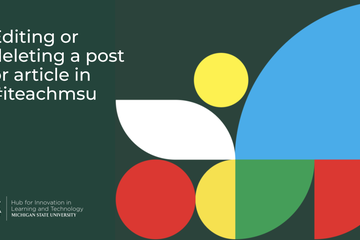
NAVIGATING CONTEXT

Posted on: #iteachmsu


Go back test
dsfsdfdsfsdf
Authored by:
NAVIGATING CONTEXT
Thursday, Dec 17, 2020
Posted on: #iteachmsu

NAVIGATING CONTEXT
Mechanism of PEP
First of all, the conditions of the realization of the PEP among other electrolyte-plasma processes are considered. PEP of metals and alloys is performed only with the anode polarity of the part. In the 1970s, it was found that the anodic stationary heating in sulphuric acid solutions ceases at voltages of 180–260 V (at 250–290 V in solutions of ammonium chloride or at 140 V or more in sodium hydroxide solutions) [56]. In this case, the temperature of the sample drops sharply, and the colour of the glow of the VGE changes. Currently, PEP is carried out at approximately such voltages, therefore, in this article the mode under discussion will be called the polishing mode, because the adjective “electro hydrodynamic” used in a number of publications does not reflect the essence of the process. There are some problematic issues of the PEP mechanism. They are the nature of the current through the vapour-gaseous layer, the mechanisms of metal removal and surface levelling, the presence of the gas layer (plasma) in contact with the metal surface or with the oxide (oxide-salt film) on its surface, as well as the present of at least short-term local contacts of the electrolyte with the surface of the metal or oxide film [57].
The nature of the removal of metal from the treated surface is associated with the mechanism of the passage of current through the VGE, which three types of charge carriers can realize.
The nature of the removal of metal from the treated surface is associated with the mechanism of the passage of current through the VGE, which three types of charge carriers can realize.
Posted by:
Rohit 936 shinde

Posted on: #iteachmsu


Mechanism of PEP
First of all, the conditions of the realization of the PEP among ot...
Posted by:
NAVIGATING CONTEXT
Friday, Dec 11, 2020
Posted on: #iteachmsu
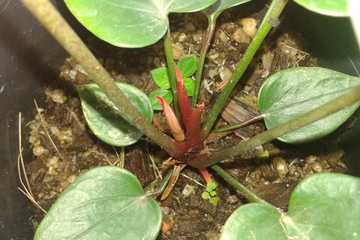
NAVIGATING CONTEXT

Posted on: #iteachmsu


techniques, skills, methods, and processes
Test
Authored by:
NAVIGATING CONTEXT
Tuesday, Jul 7, 2020
Posted on: #iteachmsu
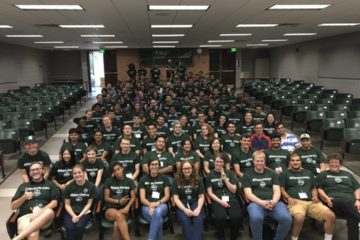
NAVIGATING CONTEXT
About
Teaching Commons: “an emergent conceptual space for exchange and communityamong faculty, students, and all others committed to learning as an essential activity of life in contemporary democratic society”(Huber and Hutchings, 2005, p.1)
What Is the #iteachmsu Commons? You teach MSU. We, the Academic Advancement Network, The Graduate School, and The Hub for Innovation in Learning and Technology, believe that a wide educator community (faculty, TAs, ULAs, instructional designers, academic advisors, et al.) makes learning happen across MSU. But, on such a large campus, it can be difficult to fully recognize and leverage this community’s teaching and learning innovations. To address this challenge, the #iteachmsu Commons provides an educator-driven space for sharing teaching resources, connecting across educator networks, and growing teaching practice.#iteachmsu Commons content may be discipline-specific or transdisciplinary, but will always be anchored in teaching competency areas. You will find blog posts, curated playlists, educator learning module pathways, and a campus-wide teaching and learning events calendar. We cultivate this commons across spaces. And through your engagement, we will continue to nurture a culture of teaching and learning across MSU and beyond.
How Do I Contribute to the #iteachmsu Commons? Content is organized by posts, playlists and pathways.Posts: Posts are shorter or longer-form blog postings about teaching practice(s), questions for the educator community, and/or upcoming teaching and learning events. With an MSU email address and free account signup, educators can immediately contribute blog posts and connected media (e.g. handouts, slide decks, class activity prompts, promotional materials). All educators at MSU are welcome to use and contribute to #iteachmsu. And there are no traditional editorial calendars. Suggested models of posts can be found here.Playlists: Playlists are groupings of posts curated by individual educators and the #iteachmsu community. Playlists allow individual educators to tailor their development and community experiences based on teaching competency area, interest, and/or discipline.Pathways: Pathways are groupings of educator learning modules curated by academic and support units for badges and other credentialing.
There are two ways to add your contribution to the space:Contribute existing local resources for posts and pathways: Your unit, college, and/or department might already have educator development resources that could be of use to the wider MSU teaching and learning community. These could be existing blog posts on teaching practice, teaching webinars, and/or open educational resources (e.g classroom assessments, activities). This content will make up part of the posts, playlists, and pathways on this site. Educators can then curate these posts into playlists based on their individual interests. Please make sure to have permission to share this content on a central MSU web space.Contribute new content for posts: A strength of the #iteachmsu Commons is that it immediately allows educators to share teaching resources, questions and events through posts to the entire community. Posts can take a variety of forms and are organized by teaching competency area categories, content tags, date, and popularity. Posts can be submitted by both individual educators and central units for immediate posting but must adhere to #iteachmsu Commons community guidelines.Posts could be:About your teaching practice(s): You discuss and/or reflect on the practices you’re using in your teaching. In addition to talking about your ideas, successes, and challenges, we hope you also provide the teaching materials you used (sharing the assignment, slidedeck, rubric, etc.)Responses to teaching ideas across the web or social media: You share your thoughts about teaching ideas they engage with from other media across the web (e.g. blog posts, social media posts, etc.).Cross-posts from other teaching-related blogs that might be useful for the #iteachmsu community: You cross-post content from other teaching-related blogs they feel might be useful to the #iteachmsu community.About teaching-related events: You share upcoming teaching related events as well as their thoughts about ideas they engage with events at MSU and beyond (e.g. workshops, conferences, etc.). If these events help you think in new ways about your practice, share them with the #iteachmsu community.Questions for our community: You pose questions via posts to the larger community to get ideas for their practice and connect with others considering similar questions.What Are the #iteachmsu Commons Policies?Part of the mission of the #iteachmsu Commons is to provide space for sharing, reflecting, and learning for all educators on our campus wherever they are in their teaching development. The commons is designed to encourage these types of interactions and reflect policies outlined by the MSU Faculty Senate. We maintain the right to remove any post that violates guidelines as outlined here and by MSU. To maintain a useful and safer commons, we ask that you:Follow the MSU Guidelines for Social Media.Engage across the #iteachmsu commons in a civil and respectful manner. Content may be moderated in accordance with the MSU Guidelines for Social Media.Do not share private or confidential information via shared content on the #iteachmsu Commons.Content posted on the #iteachmsu Commons is licensed under a Creative Commons Attribution-NonCommercial-ShareAlike 4.0 International license. Learn more about this licensing here. Posted comments, images, etc. on the #iteachmsu Commons do not necessarily represent the views of Michigan State University or the #iteachmsu Commons Team. Links to external, non-#iteachmsu Commons content do not constitute official endorsement by, or necessarily represent the views of, the #iteachmsu Commons or Michigan State University.What if I Have #iteachmsu Commons Questions and/or Feedback?If you have any concerns about #iteachmsu Commons content, please email us at iteach@msu.edu. We welcome all feedback and thank you for your help in promoting a safer, vibrant and respectful community.
What Is the #iteachmsu Commons? You teach MSU. We, the Academic Advancement Network, The Graduate School, and The Hub for Innovation in Learning and Technology, believe that a wide educator community (faculty, TAs, ULAs, instructional designers, academic advisors, et al.) makes learning happen across MSU. But, on such a large campus, it can be difficult to fully recognize and leverage this community’s teaching and learning innovations. To address this challenge, the #iteachmsu Commons provides an educator-driven space for sharing teaching resources, connecting across educator networks, and growing teaching practice.#iteachmsu Commons content may be discipline-specific or transdisciplinary, but will always be anchored in teaching competency areas. You will find blog posts, curated playlists, educator learning module pathways, and a campus-wide teaching and learning events calendar. We cultivate this commons across spaces. And through your engagement, we will continue to nurture a culture of teaching and learning across MSU and beyond.
How Do I Contribute to the #iteachmsu Commons? Content is organized by posts, playlists and pathways.Posts: Posts are shorter or longer-form blog postings about teaching practice(s), questions for the educator community, and/or upcoming teaching and learning events. With an MSU email address and free account signup, educators can immediately contribute blog posts and connected media (e.g. handouts, slide decks, class activity prompts, promotional materials). All educators at MSU are welcome to use and contribute to #iteachmsu. And there are no traditional editorial calendars. Suggested models of posts can be found here.Playlists: Playlists are groupings of posts curated by individual educators and the #iteachmsu community. Playlists allow individual educators to tailor their development and community experiences based on teaching competency area, interest, and/or discipline.Pathways: Pathways are groupings of educator learning modules curated by academic and support units for badges and other credentialing.
There are two ways to add your contribution to the space:Contribute existing local resources for posts and pathways: Your unit, college, and/or department might already have educator development resources that could be of use to the wider MSU teaching and learning community. These could be existing blog posts on teaching practice, teaching webinars, and/or open educational resources (e.g classroom assessments, activities). This content will make up part of the posts, playlists, and pathways on this site. Educators can then curate these posts into playlists based on their individual interests. Please make sure to have permission to share this content on a central MSU web space.Contribute new content for posts: A strength of the #iteachmsu Commons is that it immediately allows educators to share teaching resources, questions and events through posts to the entire community. Posts can take a variety of forms and are organized by teaching competency area categories, content tags, date, and popularity. Posts can be submitted by both individual educators and central units for immediate posting but must adhere to #iteachmsu Commons community guidelines.Posts could be:About your teaching practice(s): You discuss and/or reflect on the practices you’re using in your teaching. In addition to talking about your ideas, successes, and challenges, we hope you also provide the teaching materials you used (sharing the assignment, slidedeck, rubric, etc.)Responses to teaching ideas across the web or social media: You share your thoughts about teaching ideas they engage with from other media across the web (e.g. blog posts, social media posts, etc.).Cross-posts from other teaching-related blogs that might be useful for the #iteachmsu community: You cross-post content from other teaching-related blogs they feel might be useful to the #iteachmsu community.About teaching-related events: You share upcoming teaching related events as well as their thoughts about ideas they engage with events at MSU and beyond (e.g. workshops, conferences, etc.). If these events help you think in new ways about your practice, share them with the #iteachmsu community.Questions for our community: You pose questions via posts to the larger community to get ideas for their practice and connect with others considering similar questions.What Are the #iteachmsu Commons Policies?Part of the mission of the #iteachmsu Commons is to provide space for sharing, reflecting, and learning for all educators on our campus wherever they are in their teaching development. The commons is designed to encourage these types of interactions and reflect policies outlined by the MSU Faculty Senate. We maintain the right to remove any post that violates guidelines as outlined here and by MSU. To maintain a useful and safer commons, we ask that you:Follow the MSU Guidelines for Social Media.Engage across the #iteachmsu commons in a civil and respectful manner. Content may be moderated in accordance with the MSU Guidelines for Social Media.Do not share private or confidential information via shared content on the #iteachmsu Commons.Content posted on the #iteachmsu Commons is licensed under a Creative Commons Attribution-NonCommercial-ShareAlike 4.0 International license. Learn more about this licensing here. Posted comments, images, etc. on the #iteachmsu Commons do not necessarily represent the views of Michigan State University or the #iteachmsu Commons Team. Links to external, non-#iteachmsu Commons content do not constitute official endorsement by, or necessarily represent the views of, the #iteachmsu Commons or Michigan State University.What if I Have #iteachmsu Commons Questions and/or Feedback?If you have any concerns about #iteachmsu Commons content, please email us at iteach@msu.edu. We welcome all feedback and thank you for your help in promoting a safer, vibrant and respectful community.
Authored by:
Admin #iteachmsu

Posted on: #iteachmsu


About
Teaching Commons: “an emergent conceptual space for exchange and co...
Authored by:
NAVIGATING CONTEXT
Thursday, Jun 18, 2020
Posted on: #iteachmsu
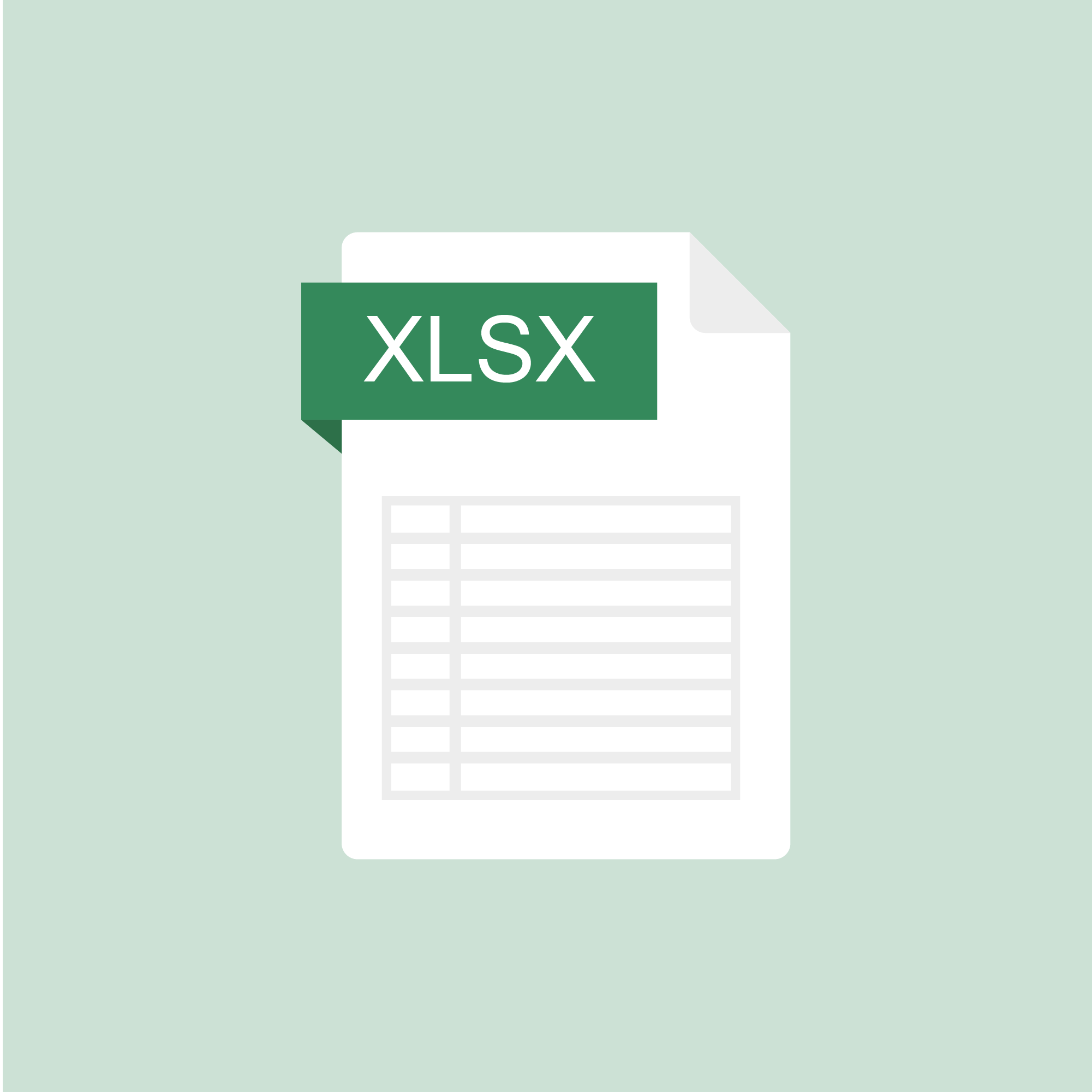
NAVIGATING CONTEXT
Impacts of Global Warming
Test article : xlsx
https://www.climatehotmap.org/global-warming-effects/
Global warming is already underway with consequences that must be faced today as well as tomorrow. Evidence of changes to the Earth's physical, chemical and biological processes is now evident on every continent.
To fully appreciate the urgency of climate change, it's important to understand the ways it affects society and the natural environment. Sea levels are rising and glaciers are shrinking; record high temperatures and severe rainstorms and droughts are becoming increasingly common. Changes in temperatures and rainfall patterns alter plant and animal behavior and have significant implications for humans. In this section, explore the connections between the climate data and the changes happening around you—and those you can expect to see in the future—in all parts of the globe, including your own backyard.
Not only are global warming-induced changes currently underway, but scientists also expect additional effects on human society and natural environments around the world. Some further warming is already unavoidable due to past heat-trapping emissions; unless we aggressively reduce today's emissions, scientists project extra warming and thus additional impacts.
The Climate Hot Map arranges current and future climate impacts into five main groupings:
People
Freshwater
Oceans
Ecosystems
Temperature
https://www.climatehotmap.org/global-warming-effects/
Global warming is already underway with consequences that must be faced today as well as tomorrow. Evidence of changes to the Earth's physical, chemical and biological processes is now evident on every continent.
To fully appreciate the urgency of climate change, it's important to understand the ways it affects society and the natural environment. Sea levels are rising and glaciers are shrinking; record high temperatures and severe rainstorms and droughts are becoming increasingly common. Changes in temperatures and rainfall patterns alter plant and animal behavior and have significant implications for humans. In this section, explore the connections between the climate data and the changes happening around you—and those you can expect to see in the future—in all parts of the globe, including your own backyard.
Not only are global warming-induced changes currently underway, but scientists also expect additional effects on human society and natural environments around the world. Some further warming is already unavoidable due to past heat-trapping emissions; unless we aggressively reduce today's emissions, scientists project extra warming and thus additional impacts.
The Climate Hot Map arranges current and future climate impacts into five main groupings:
People
Freshwater
Oceans
Ecosystems
Temperature
Authored by:
Chathuri hewapathirana

Posted on: #iteachmsu


Impacts of Global Warming
Test article : xlsx
https://www.climatehotmap.org/global-warming-ef...
https://www.climatehotmap.org/global-warming-ef...
Authored by:
NAVIGATING CONTEXT
Friday, Apr 10, 2020


